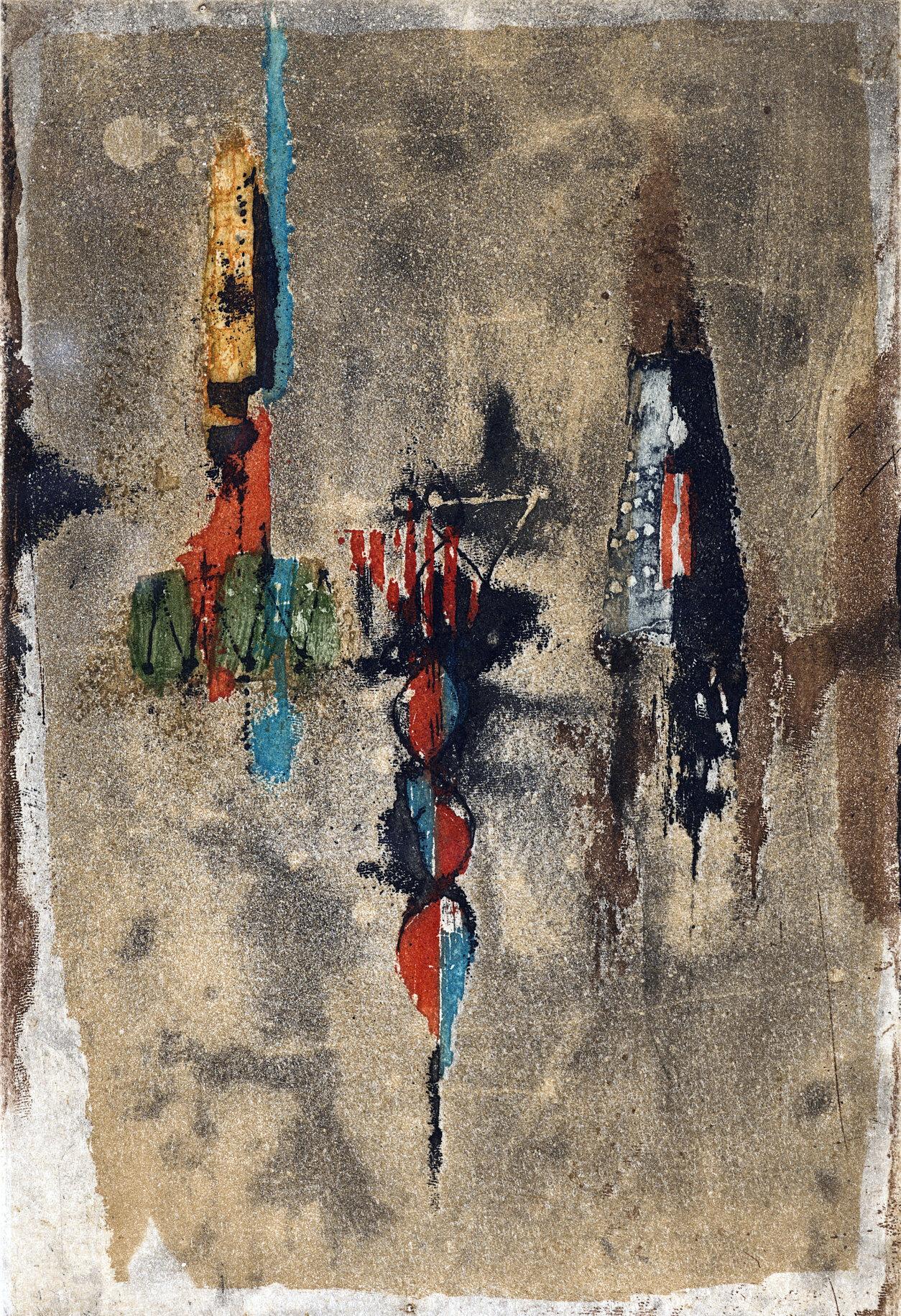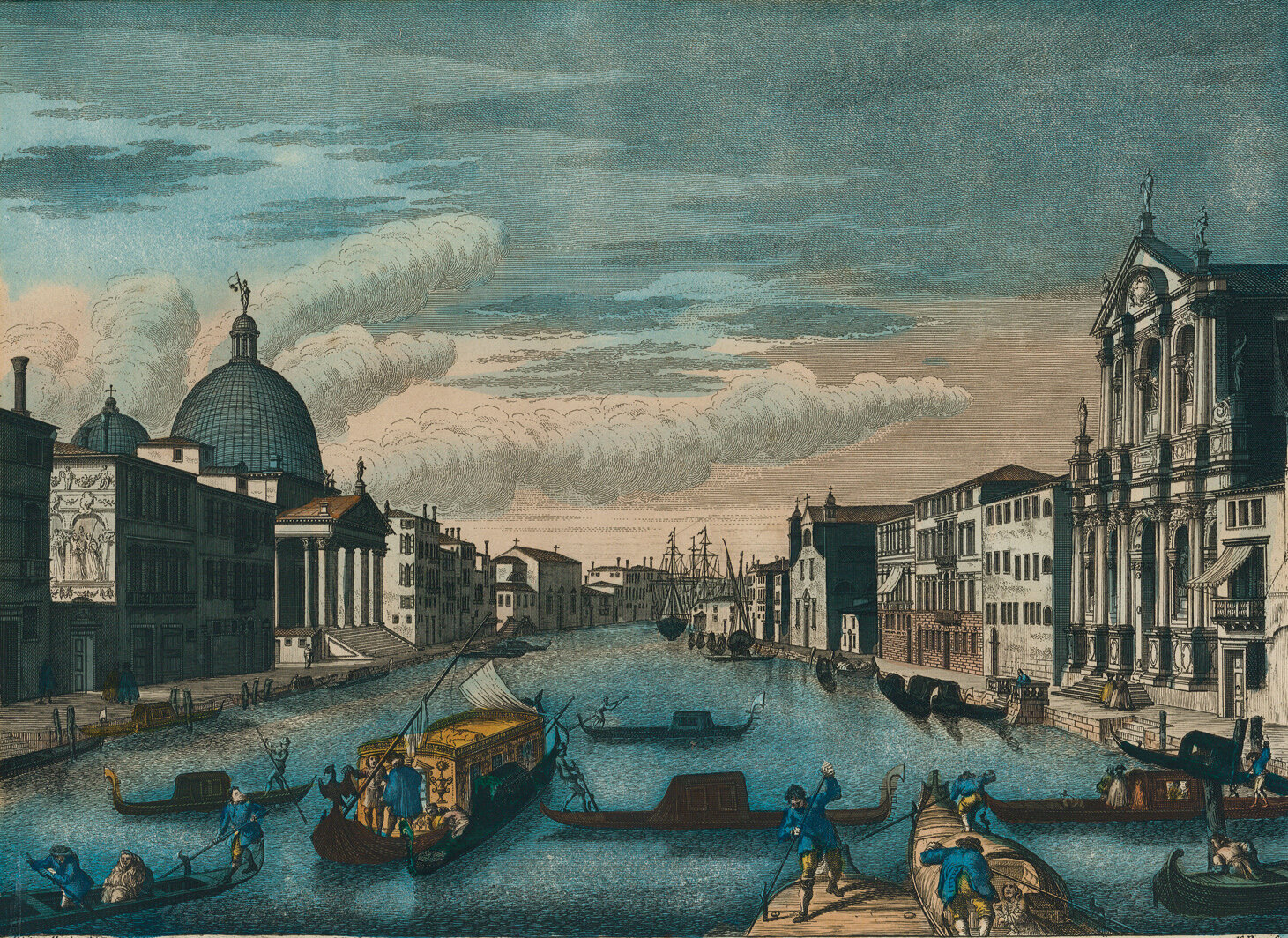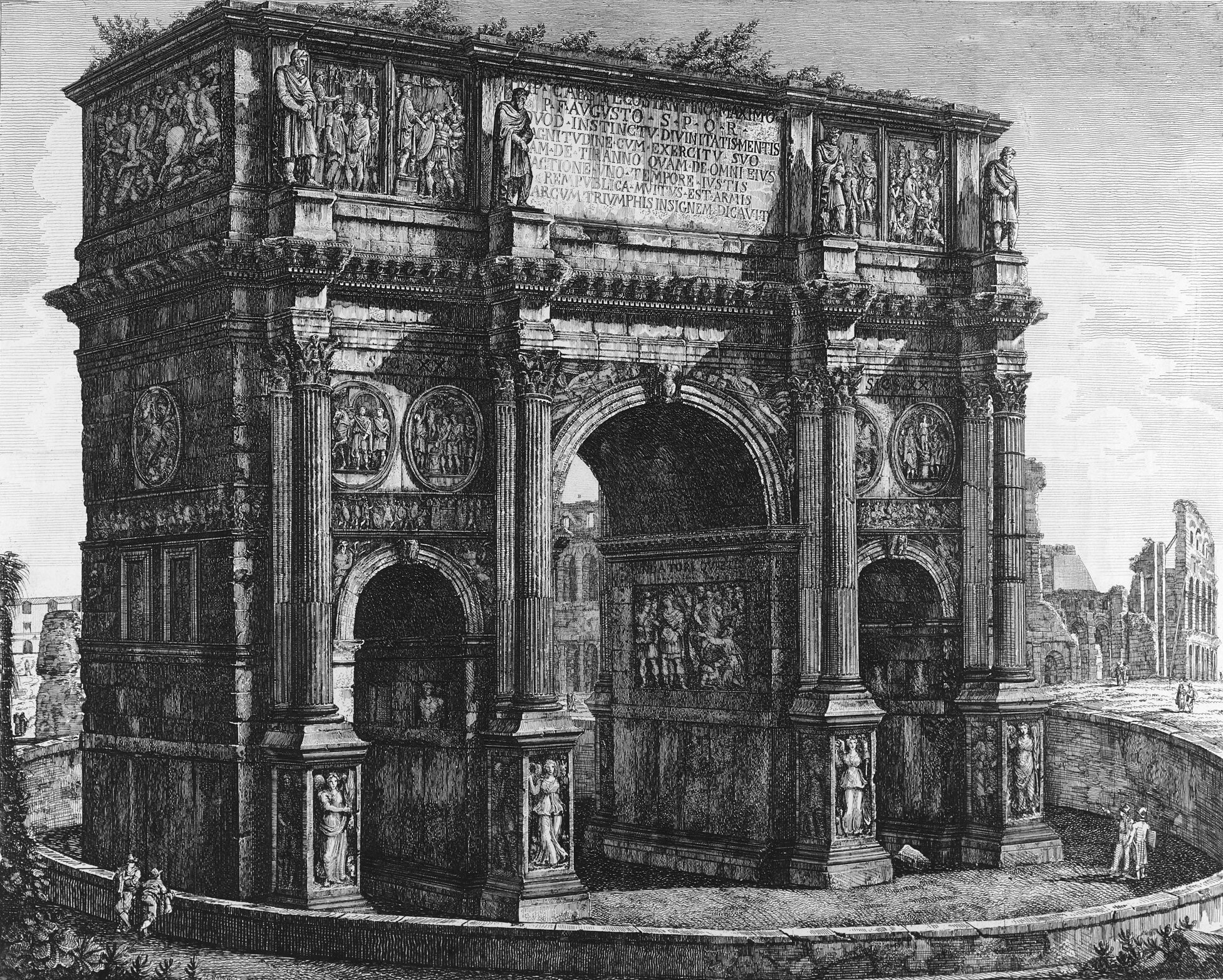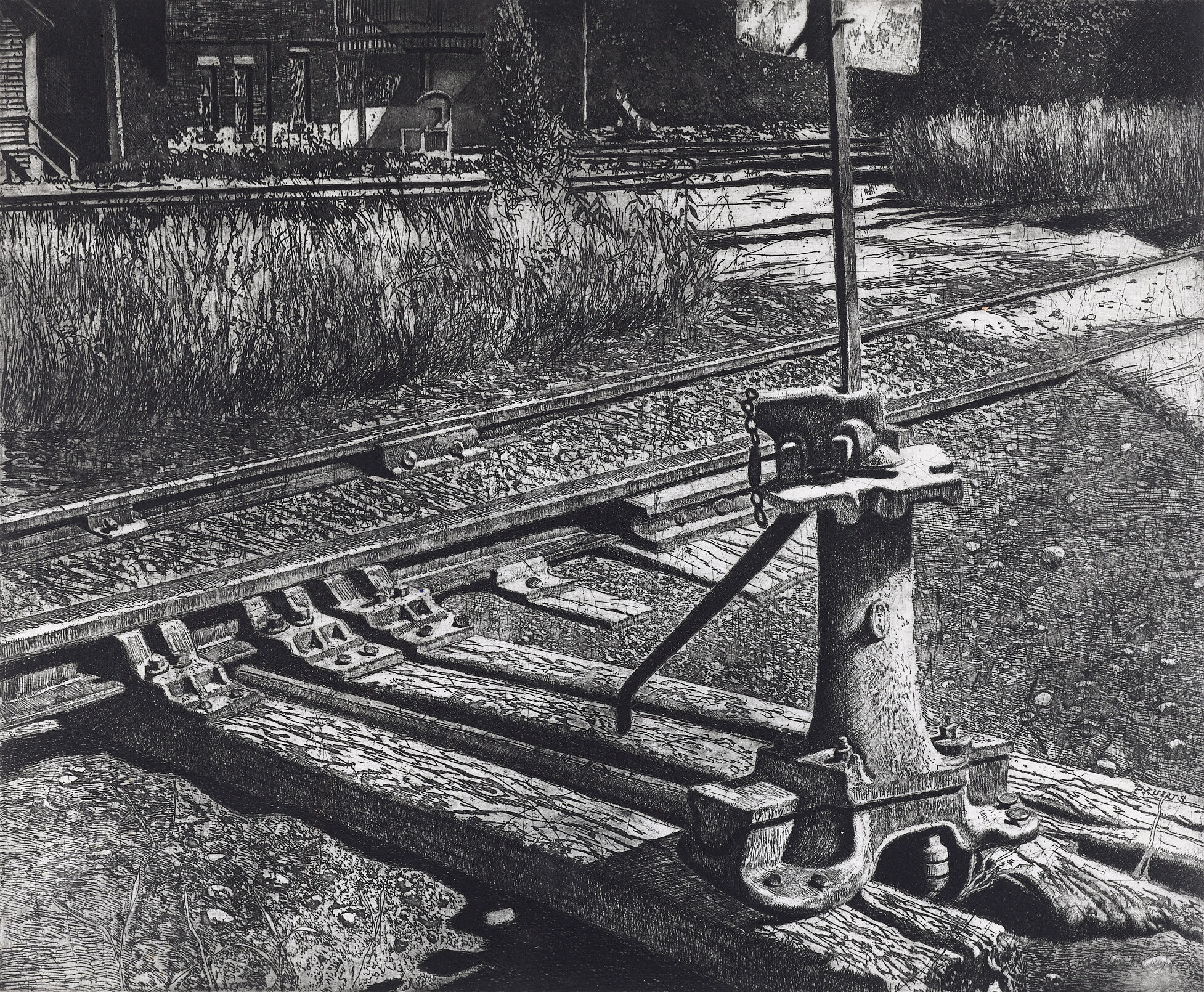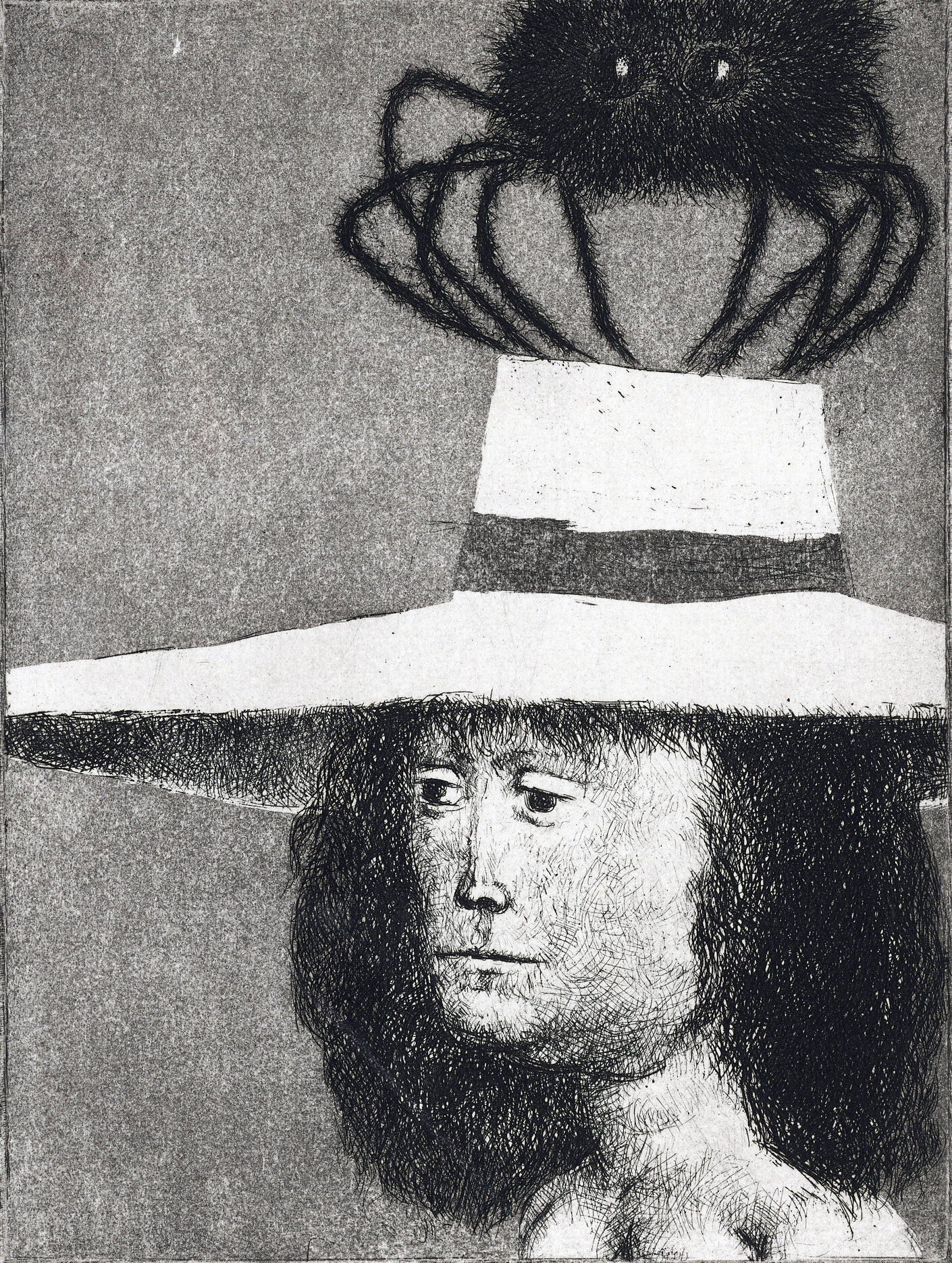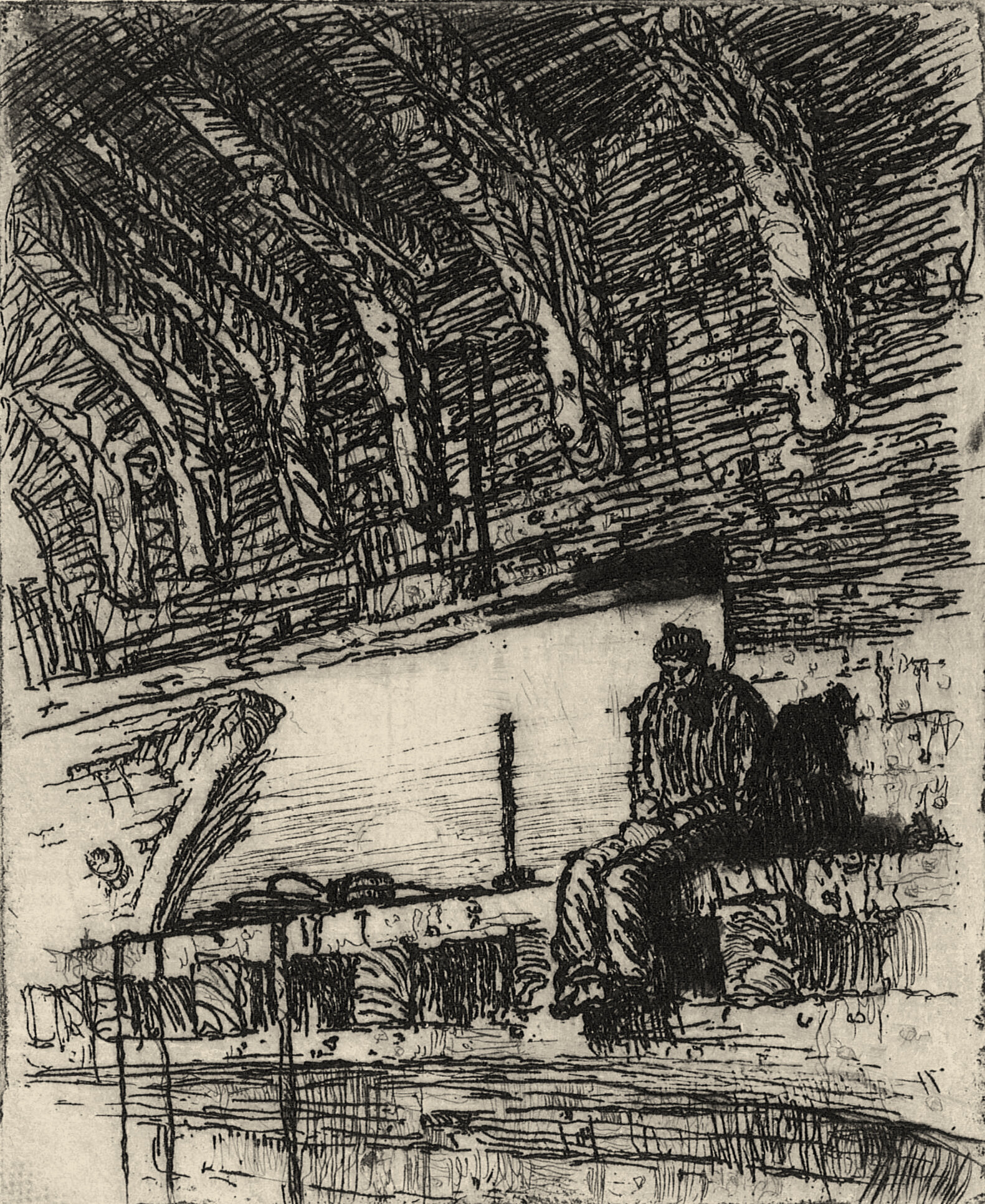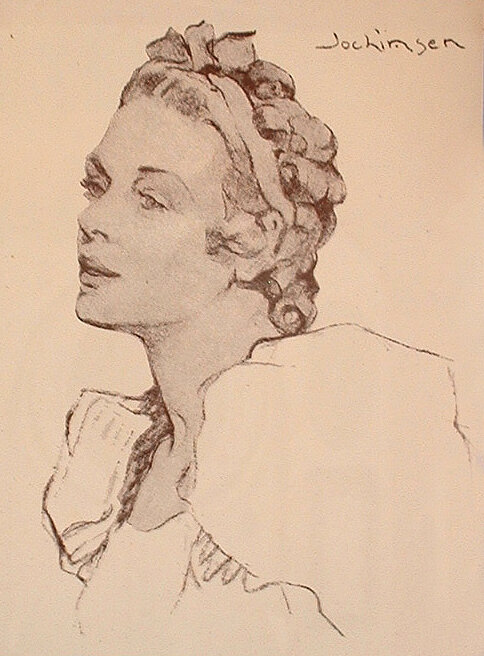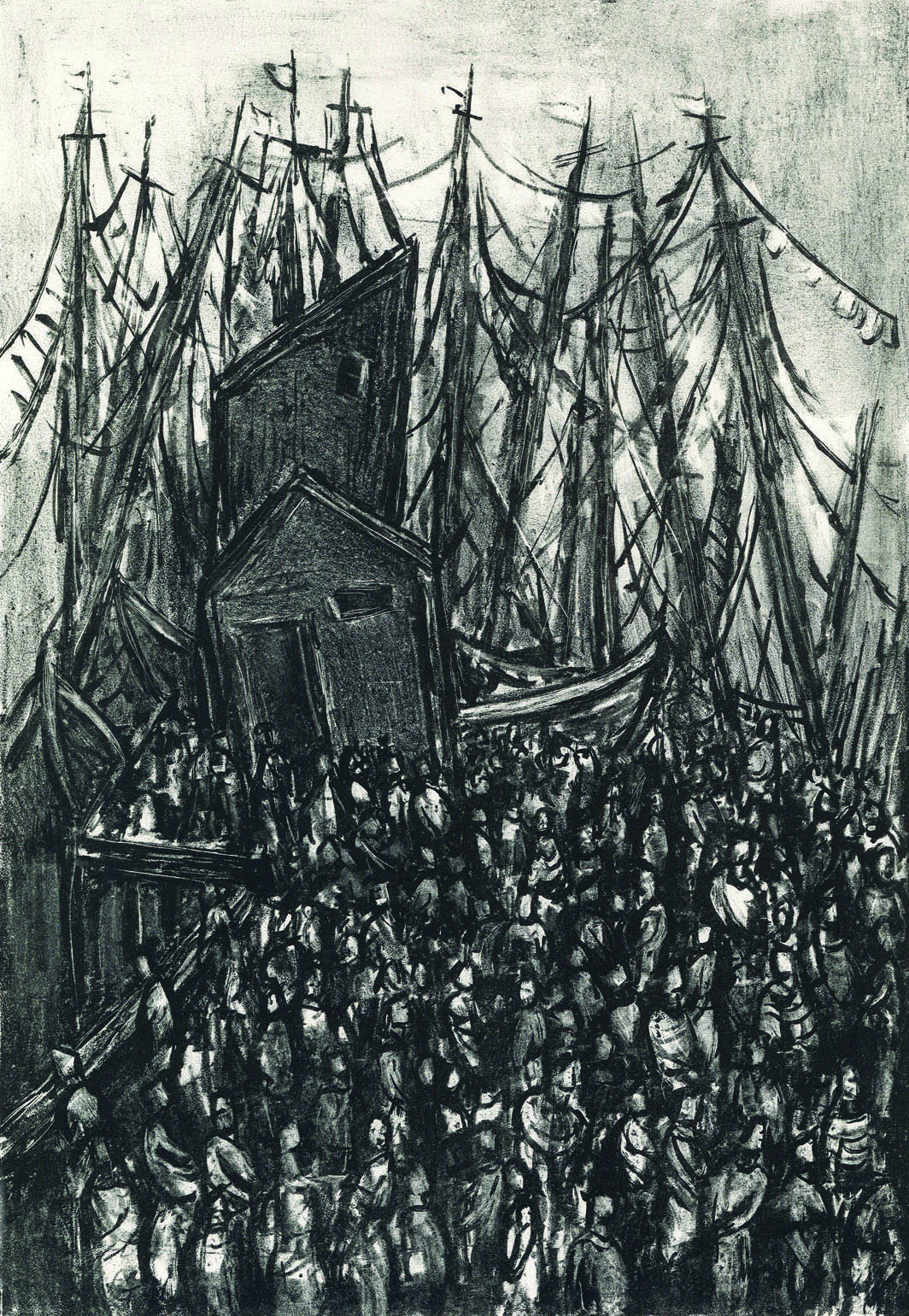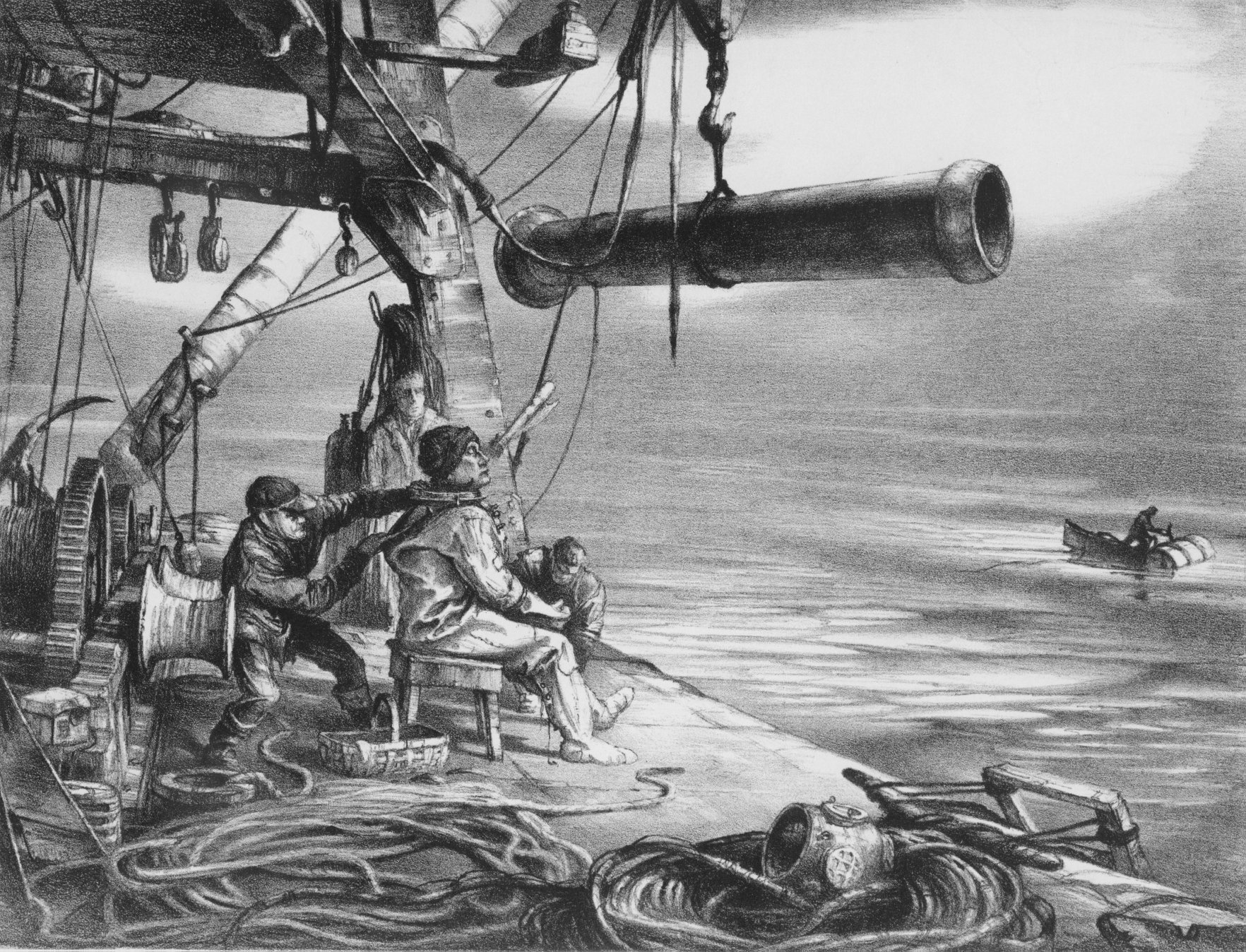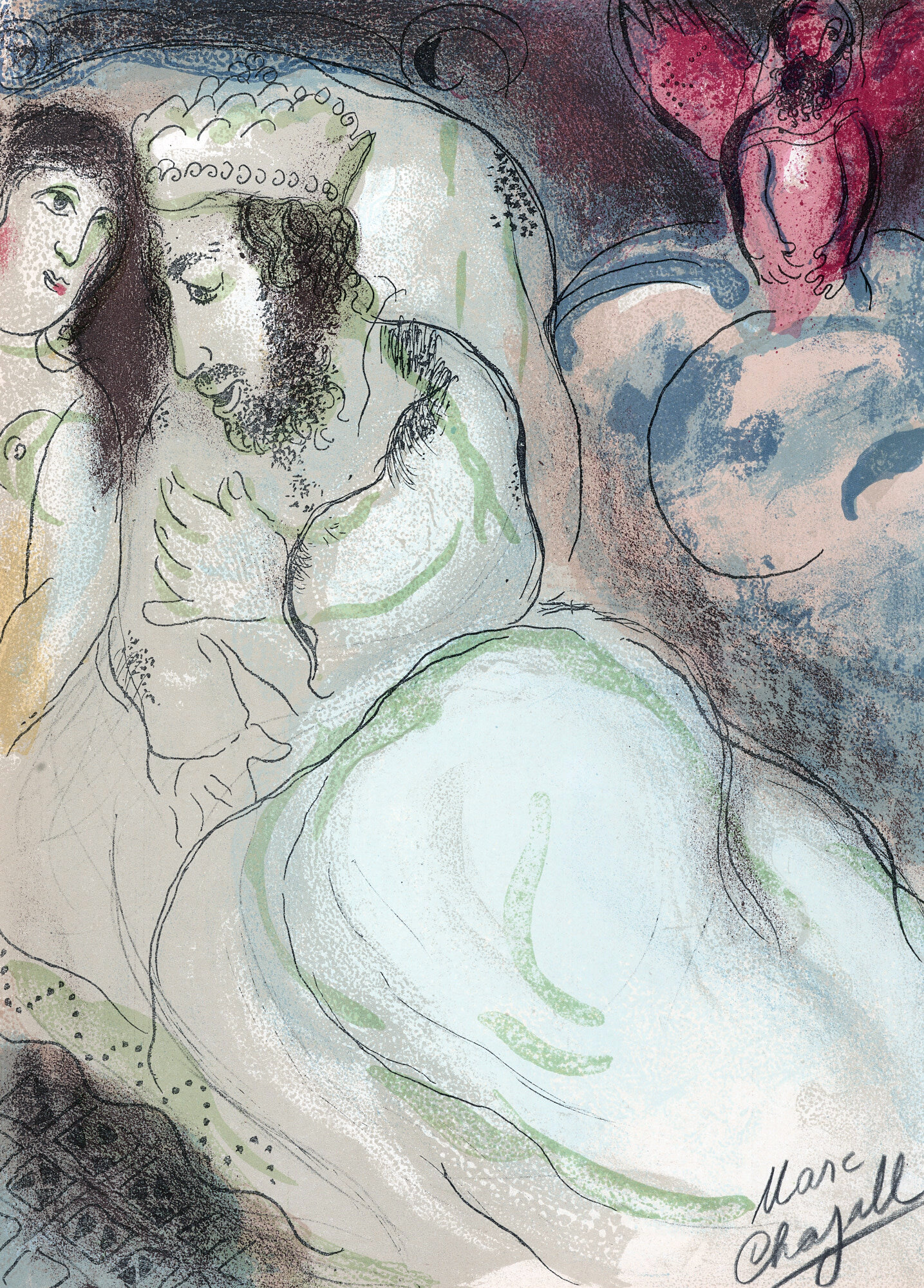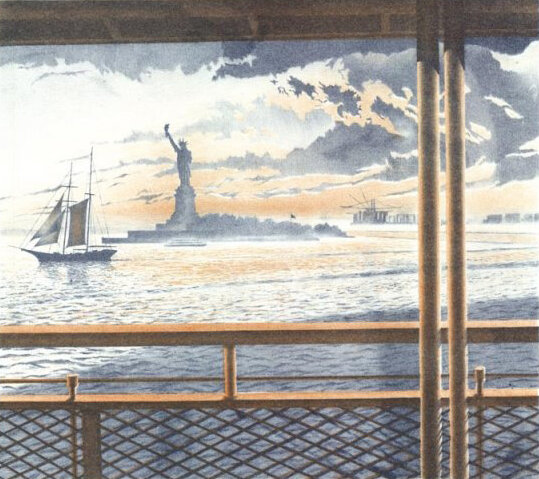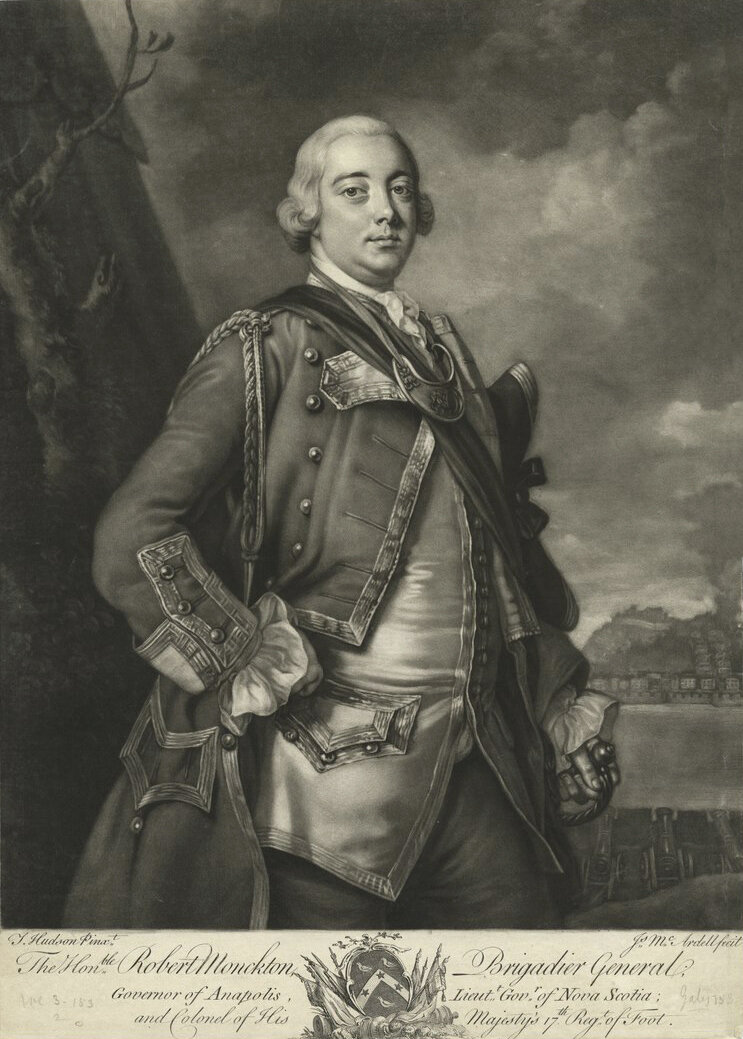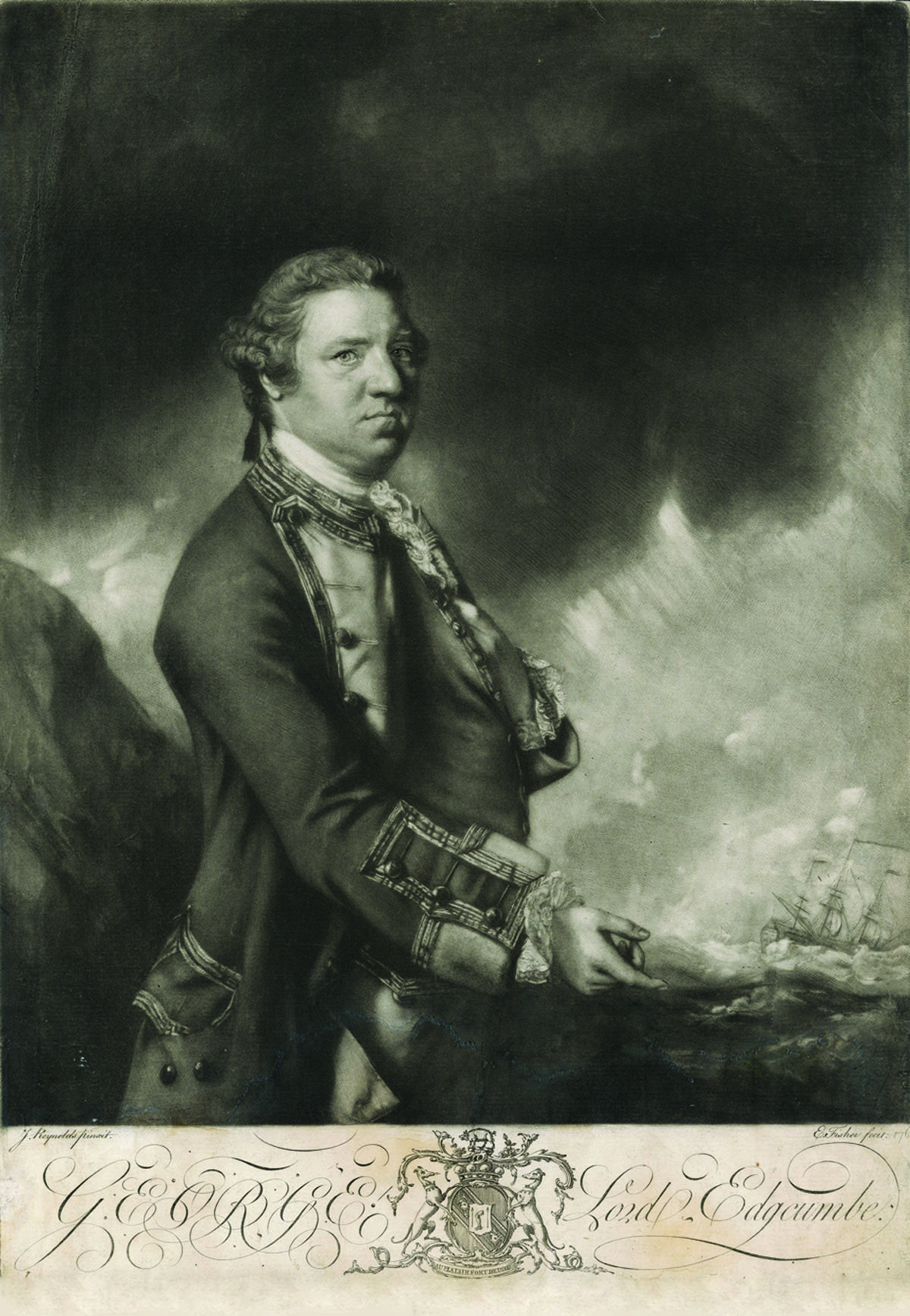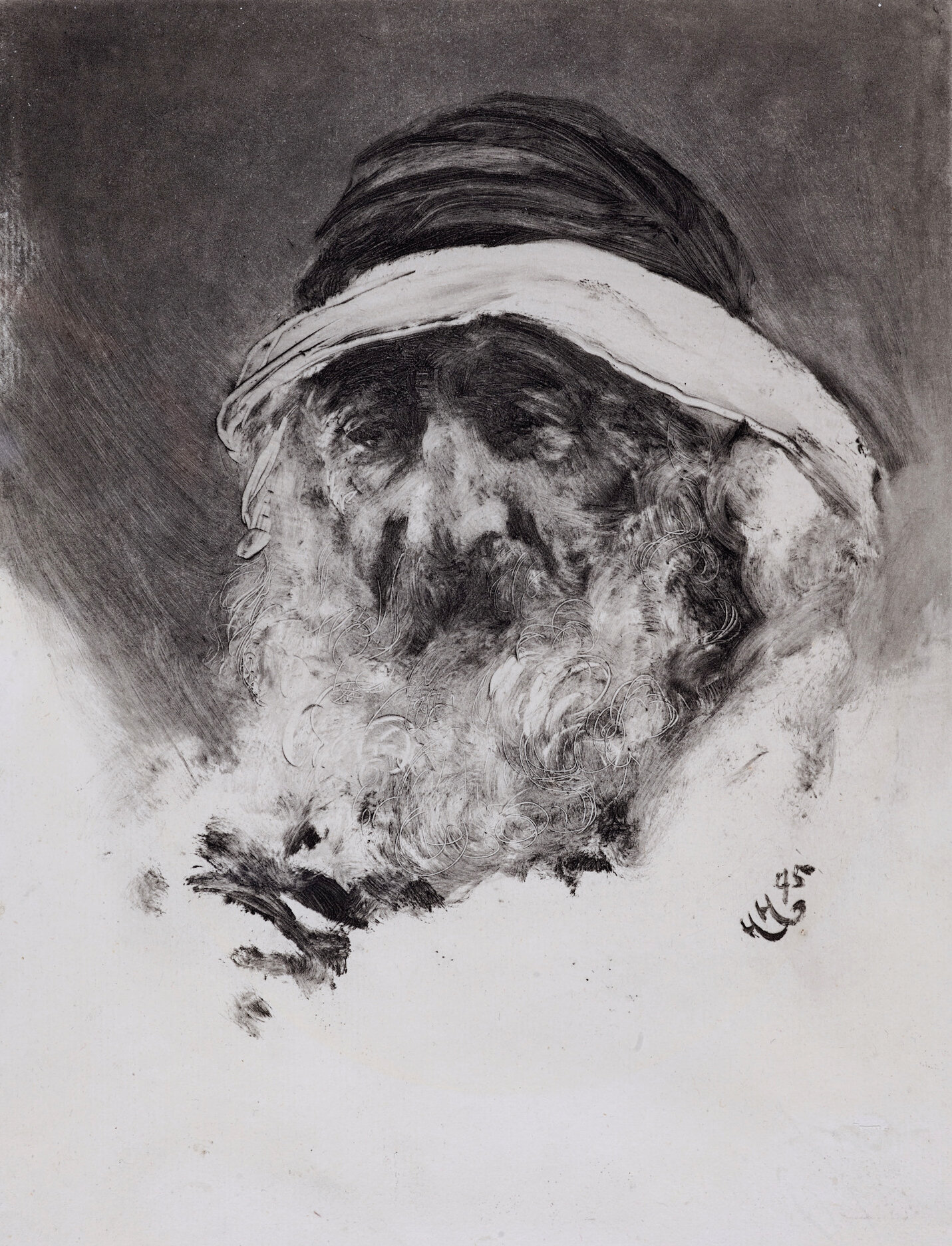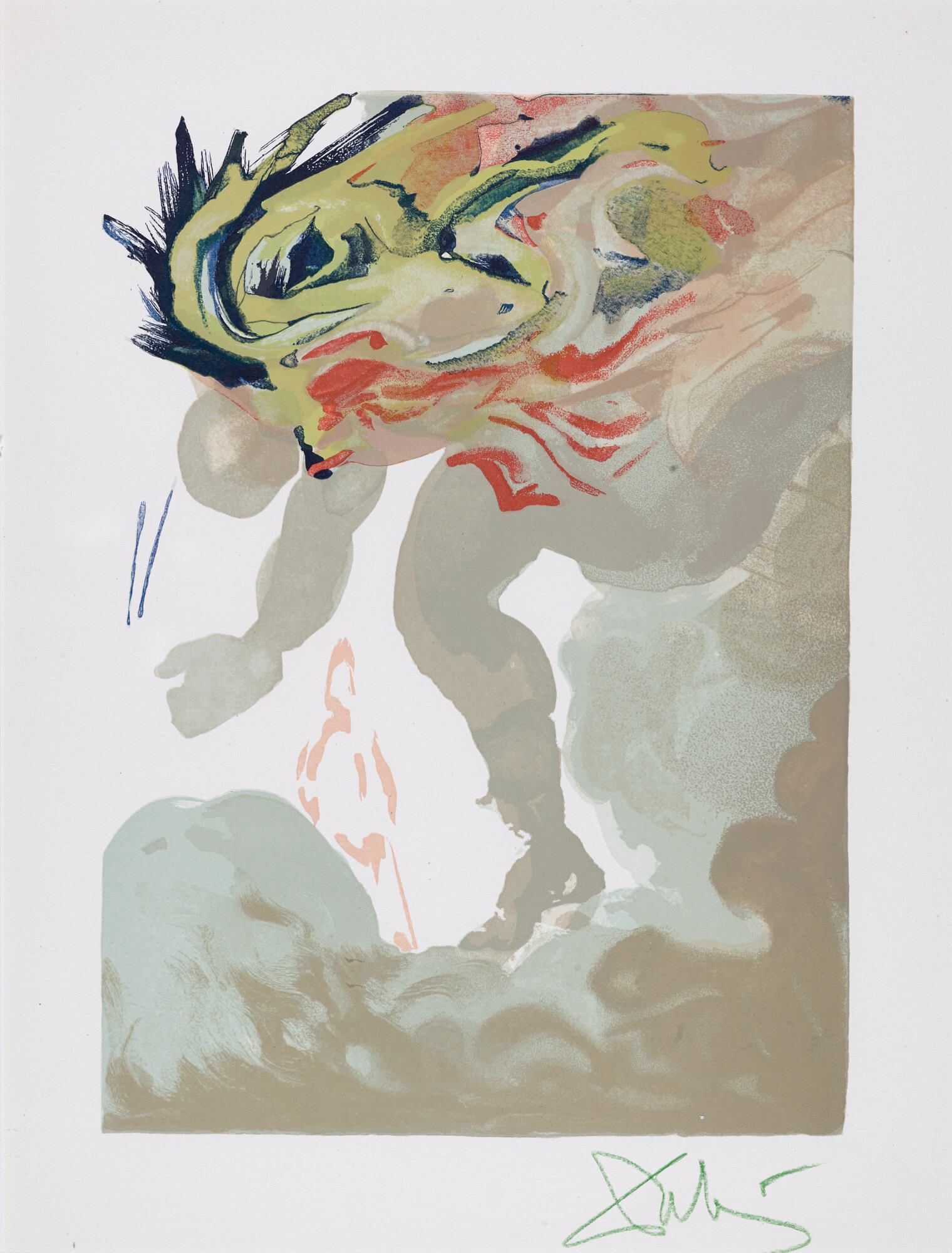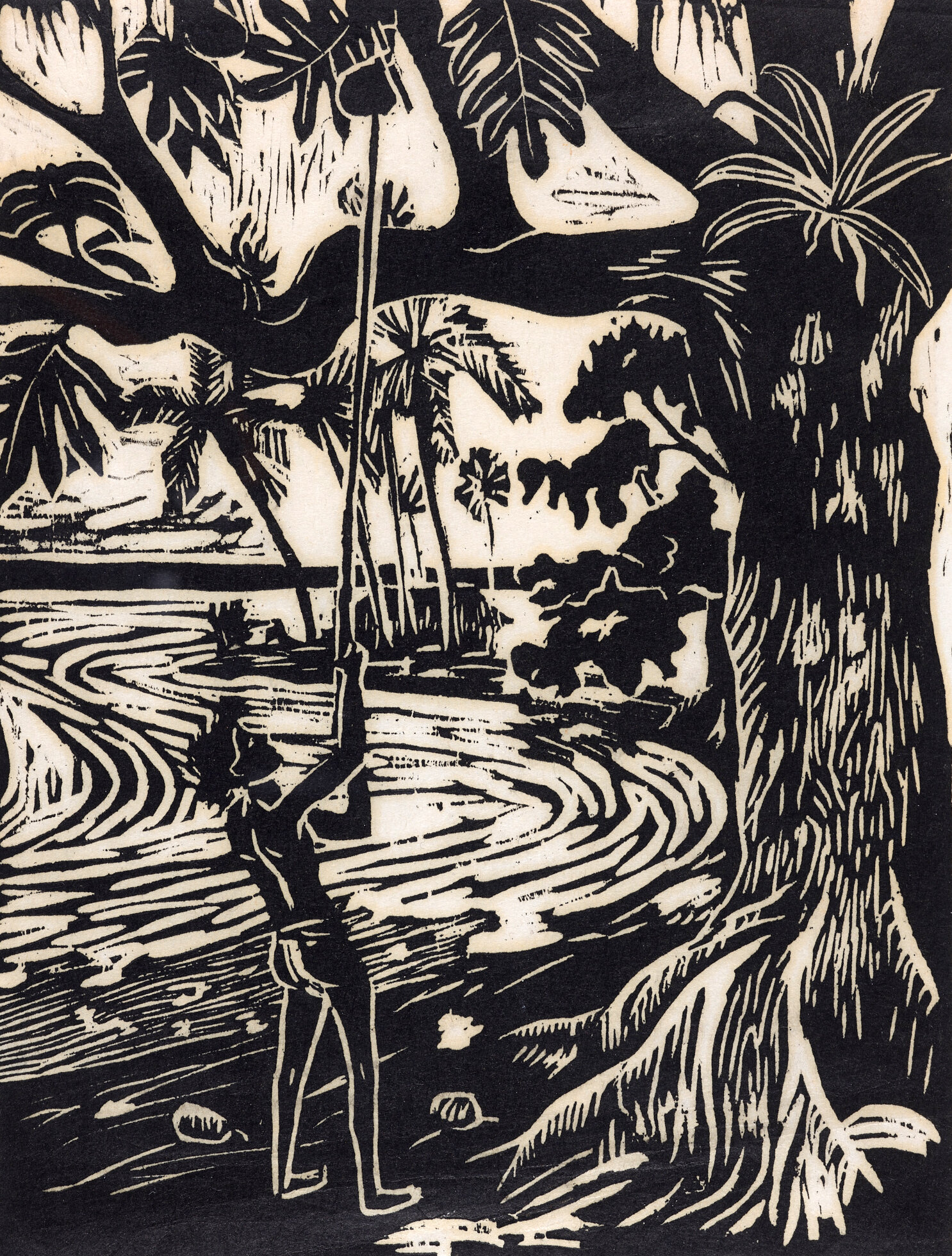This is a Print
Printmaking, like drawing and painting, is a method an artist can use to make an image. An artist chooses to use this particular method in order to create more than one copy of the image and to enjoy the unique methods and characteristics of a print.
To make a print, the artist draws or cuts with specific tools onto a variety of surfaces, including wood, stone, and metal. He then puts ink on to the surface, and paper on to the inked surface, and passes this sandwich through a printing press. The press forces ink onto the paper. By repeating this process over and over again, the artist creates duplicate copies, or prints, of the same image, called editions. When the edition is complete, the artist cancels it by x-ing it out, removing the image from the surface, or in some similar way canceling or destroying the original plate.
The difference between an original print and a reproduction has to do with the artist’s intention. If the artist puts the image on a master plate or block with the intention of making an edition, the resulting works are originals. If the existing image, such a painting, is transposed by photographic means to a printmaking medium solely to be reproduced, then the reproductions are not original prints.
Our exhibition has examples of several types of prints, specifically the etching, aquatint, mezzotint, and engraving, all of which are done on metal plates; the lithograph, which is drawn on stone; and the wood engraving or wood cut, which are cut into wood.
Inspired by John A. Noble’s preference for printmaking, this exhibition includes pieces from the newly acquired collection of historian Barnett Shepherd.

